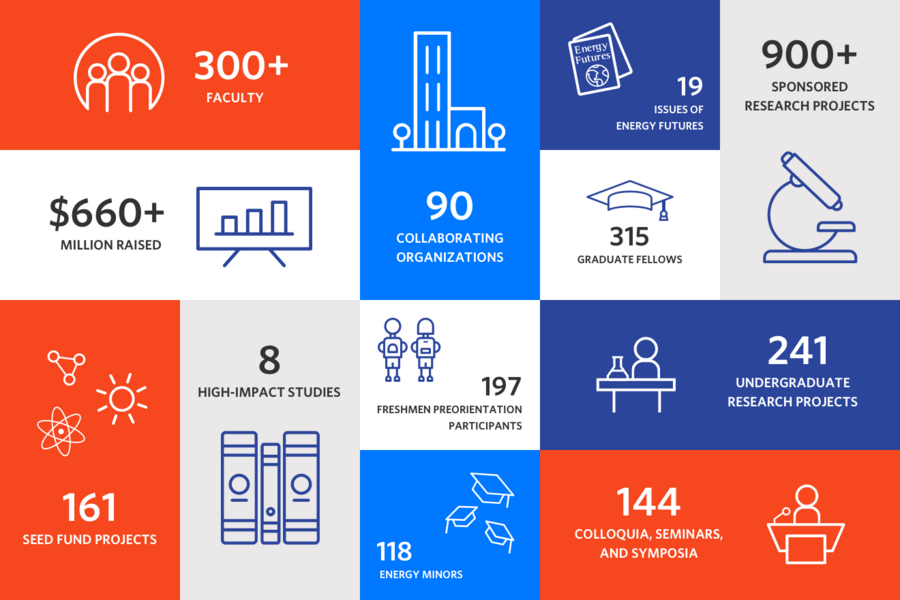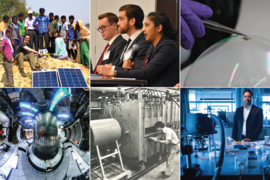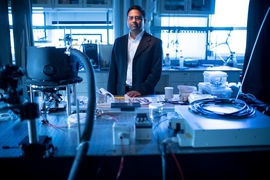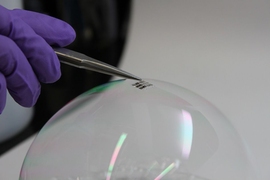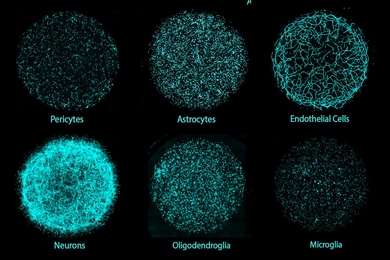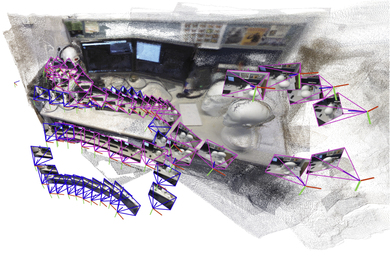This year marks 10 years since the MIT Energy Initiative (MITEI) was founded as MIT’s hub for energy research, education, and outreach. To mark the occasion, MITEI Director Robert Armstrong shared his thoughts on some of the MIT energy community’s achievements to date and highlighted promising projects that could lead to breakthroughs in the decades to come. He also discussed the characteristics and resources that have helped MIT develop a thriving center of energy research.
Q: What are some of the most significant research impacts the MIT energy community has made over the past decade?
A: While the horizon for the majority of energy research we do here at MIT is generally at least several decades, some researchers have already been able to translate their research into technologies and start-up companies — many with early funding support from MITEI member companies and donors. A few examples include:
- flexible, thin-film solar photovoltaics that can be printed on nearly any surface, developed by Professor Vladimir Bulović and colleagues;
- Khethworks, a Tata Center for Technology and Design spinoff that is developing affordable irrigation for the developing world, co-founded by Katherine Taylor SM ’15, Victor Lesniewski, and PhD student Kevin Simon SM ’15;
- the solar-powered village-scale electrodialysis desalination system developed by PhD candidate Natasha Wright with Professor Amos Winter to provide clean drinking water to rural, off-grid villages in India — another project originating from the Tata Center;
- energy storage companies including Professor Yet-Ming Chiang’s 24M and Baseload Renewables, Professor Donald Sadoway’s Ambri, and FastCAP Systems, co-founded by Riccardo Signorelli PhD ’09 and Professor Joel Schindall;
- Keystone Tower Systems, co-founded by Eric Smith ’01, SM ’07, Rosalind Takata ’00, SM ’06, and Professor Alexander Slocum, which has made it possible to fabricate wind turbine towers on location, making taller towers economically feasible
- Professor Kripa Varanisi’s research on engineering slippery surfaces to eliminate waste from manufacturing, which has led to a coating, LiquiGlide, and a start-up company, Dropwise — co-founded with Associate Provost Karen Gleason — that is developing coatings for power plants and industrial machinery to improve efficiency;
- the MIT-developed tokamak fusion research reactor, which set a record for plasma pressure and has paved the way for future fusion reactors; and
- multidisciplinary studies such as “The Future of Solar Energy” and “Utility of the Future,” which have taken a comprehensive, system-level approach to energy challenges, with recommendations for policymakers, regulators, and industry.
Q: What do you see as the most promising energy developments for the future?
A: Our faculty and students are working on projects with great potential for the future. Among those that could have transformative implications for our energy system are:
- next-generation solar technologies that lower manufacturing and system integration costs;
- long-term energy storage technologies to enable wind and solar deployment at scale;
- design and implementation of more robust electric grids for developing and developed nations — complemented by analysis and outreach that encourages innovative policies, regulations, and business models;
- energy- and climate-conscious urban planning to reduce intrinsic energy needs of new cities and neighborhoods, helping to mitigate climate change and increase resilience while making communities more livable — from materials like less carbon-intensive concrete to renewable energy and energy efficiency technologies;
- insights into how transportation will evolve with developments in technology, fuel, infrastructure, policy, and consumer preference, currently being examined through MITEI’s "Mobility of the Future" study, expected to be published in 2019;
- new approaches to fusion that could begin to come to fruition, such as the small-scale reactor currently being designed at MIT;
- development of advanced nanoscale materials engineered for high performance in devices — for example, quantum dot materials for solar photovoltaics, light-emitting diodes, and thermoelectric systems, and carbon nanotube electrodes for capacitors, batteries, and water desalination systems; and
- student and alumni research, technology, and policy development.
While we may not even know yet where our current or future students’ research will take them, or what our alumni may achieve in industry, government, or academic roles, I am confident that we’re preparing future innovators to meet energy and climate challenges.
Q: Why is MIT a compelling place for energy research?
A: First and foremost, it’s the people here: the impressive expertise of the faculty and the intelligence and enthusiasm of the students, coupled with their eagerness to work across disciplines and to engage with industry and government on urgent energy challenges and issues. When the Energy Research Council was forming the MIT Energy Initiative, we thought that MIT had the right characteristics for cultivating an energy research and education community. As our researchers have developed projects with about 90 industry and public entities, we’ve seen an amazing degree and depth of collaboration across sectors, including many innovative outcomes that we couldn’t have anticipated.
We’re increasingly working to translate completed research into commercializable ideas and companies. For example, the Tata Center for Technology and Design has interesting work going on to help their teams of graduate students and faculty deploy their projects at a larger scale. And we work with and draw on the knowledge of entities like the Martin Trust Center for MIT Entrepreneurship; having these kinds of resources right here on campus makes a huge difference in our ability to launch new business enterprises. The Engine is another prime illustration of a uniquely MIT-developed resource that is already having a positive impact: raising and investing patient capital to support promising projects within and outside of MIT, including energy ventures like Professor Yet-Ming Chiang’s Baseload Renewables or Professor Jeff Grossman’s Via Separations. MITEI’s Low-Carbon Energy Centers continue to convene researchers around specific energy technology areas to address climate change in areas from energy storage to advanced materials for energy applications, working with industry member companies — providing fertile ground for student projects and theses.
Our community also has a symbiotic relationship with the vibrant energy ecosystem here in Massachusetts and in the greater northeast region: Our Undergraduate Research Opportunities Program and Energy Studies Minor students have many local internships and careers to choose from, and companies and governments can tap our faculty expertise for speaking events, studies, and projects.
The administration’s five-year Plan for Action on Climate Change, support for using the campus as a living laboratory, and interest in exploring other ways of reducing our carbon footprint all generate opportunities for faculty, students, and staff. A few examples include the Office of Sustainability’s work with the Department of Facilities and MIT energy researchers to develop a greenhouse gas inventory, followed by the collaboration with Boston Medical Center and Post Office Square Redevelopment Corporation to develop the solar power purchase agreement for Summit Farms in North Carolina. The upgrades to MIT’s central utilities cogeneration plant also present learning opportunities for MIT and the broader community.
These and numerous other factors make MIT a great place for energy research, and I anticipate even greater growth in our energy community in the years to come.
